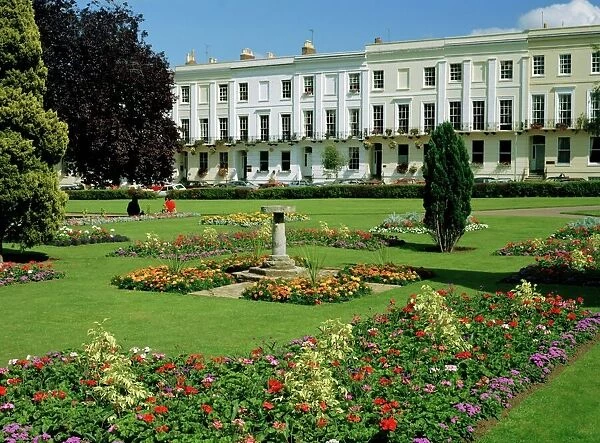The Regency Era, spanning from the late 18th to the early 19th century, was a defining period for Cheltenham.
Regency Era (Late 18th – Early 19th Century):
Architectural Renaissance:
During the Regency Era, Cheltenham experienced a remarkable architectural transformation. New buildings reflected the tastes of the period, with clean lines, elegant proportions, and intricate ironwork balconies. The Regency style, characterized by its symmetrical facades and classical details, became synonymous with the town.
The iconic Regency terraces, crescents, and squares, such as Lansdown Crescent, Montpellier Terrace, and Imperial Square, became emblems of Cheltenham’s newfound prestige. These structures weren’t just residential; they included pump rooms, assembly halls, and other amenities catering to the spa-going populace.
Promenades and Gardens:
Another hallmark of Regency Cheltenham was the emphasis on outdoor spaces for recreation and socialization. The Promenade, one of Cheltenham’s most recognizable avenues today, was developed during this period. Flanked by trees and elegant townhouses, it became the town’s primary thoroughfare and a focal point for leisurely strolls, social interactions, and shopping.
Additionally, gardens such as the Imperial Gardens and Montpellier Gardens were established, providing peaceful retreats for visitors and locals alike.
Cultural Flourishing:
The cultural scene that had begun with the spa boom continued to flourish during the Regency Era. The town became a hub for literature, art, and especially music. Assembly rooms and theatres hosted regular performances, concerts, and balls, catering to the upper echelons of society that frequented Cheltenham.
Economic Prosperity:
Cheltenham’s rise as a spa destination naturally brought economic prosperity. New businesses opened to cater to the needs and desires of the affluent visitors. From luxurious hotels to boutiques and eateries, Cheltenham’s economy diversified and expanded.
Challenges:
Despite its prosperity, Cheltenham, like many towns of its era, had its challenges. Sanitation, overcrowding during peak seasons, and the ever-present class divides were some issues the town grappled with. However, the allure of its spa waters and the overall elegance of the town kept visitors coming.
End of the Era:
As the 19th century progressed, the allure of spa towns, including Cheltenham, began to wane slightly. Other forms of entertainment and the rise of seaside resorts contributed to this shift. However, the legacy of the Regency Era left an indelible mark on Cheltenham, shaping its identity for centuries to come.
Conclusion:
The Regency Era was a golden age for Cheltenham, propelling it to the forefront of English high society. The period’s architectural, cultural, and social influences transformed the town into a symbol of elegance and refinement. Today, the Regency terraces, promenades, and gardens stand as testament to a time when Cheltenham was the epitome of fashion and sophistication.
